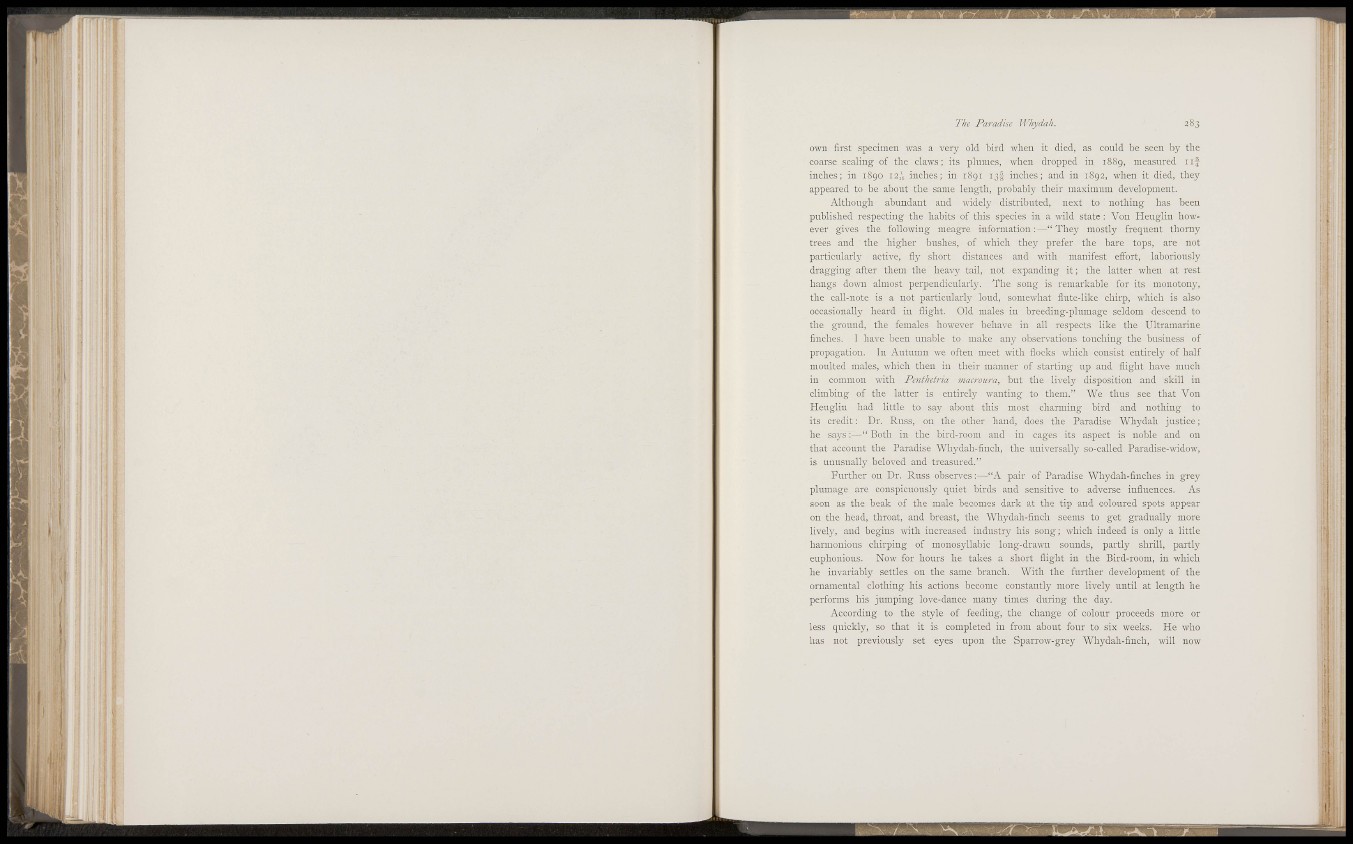
1^1
I I
-Hit P
!
! r
I f
Ill .S
The Paradise Whydah. 28 3
own first specimen was a very old bird wlien it died, as could be seen by the
coarse scaling of tlie claws; its plumes, when dropped in 1889, measured iif
inches; iu 1890 12,5 inches; in 1891 I3f inches; and in 1892, when it died, they
appeared to be about the same length, probably their maximum development.
Although abundant and ^videly distributed, next to nothing has been
published respecting the habits of this species in a wild state : Von Heuglin however
gives the following meagre information :—" They mostly frecjuent thomy
trees and the higher bushes, of which they prefer the bare tops, are not
particularly active, fly short distances and with manifest effort, laboriously
dragging after them the heavy tail, not expanding it; the latter when at rest
hangs down almost perpendicular^. The song is remarkable for its monotony,
the call-note is a not particularly loud, somewhat flute-like chirp, which is also
occasionally heard in flight. Old males in breeding-plumage seldom descend to
the ground, the females however behave in all respects like the Ultramarine
finches. I have been unable to make any observations touching the business of
propagation. In Autumn we often meet with flocks which consist entirely of half
moulted males, which then iu their manner of starting up and flight have much
in common with Penthetria maa ^ oura, but the lively disposition and skill in
climbing of the latter is entirely wanting to them." We thus see that Von
Heuglin had little to say about this most charming bird and nothing to
its credit: Dr. Rttss, on the other hand, does the Paradise Whydah justice;
he says:—" Both in the bird-room and in cages its aspect is noble and on
that account the Paradise Whydah-fiuch, the universally so-called Paradise-widow,
is unusually beloved and treasured."
Further on Dr. Russ observes :—" A pair of Paradise Whydah-finches in grey
plumage are conspicuously quiet birds and sensitive to adverse influences. As
soon as the beak of the male becomes dark at the tip and coloured spots appear
on the head, throat, and breast, the Whydah-finch seems to get gradually more
lively, and begins with increased industry his song; which indeed is only a little
harmonious chirping of monosyllabic long-drawn sounds, partly shrill, partly
euphonious. Now for hours he takes a short flight in the Bird-room, in which
he invariably settles on the same branch. With the further development of the
ornamental clothing his actions become constantly more lively until at length he
performs his jumping love-dance many times during the day.
According to the style of feeding, the change of colour proceeds more or
less quickly, so that it is completed in from about four to six weeks. He who
has not previously set eyes upon the Sparrow-grey Whydah-finch, will now